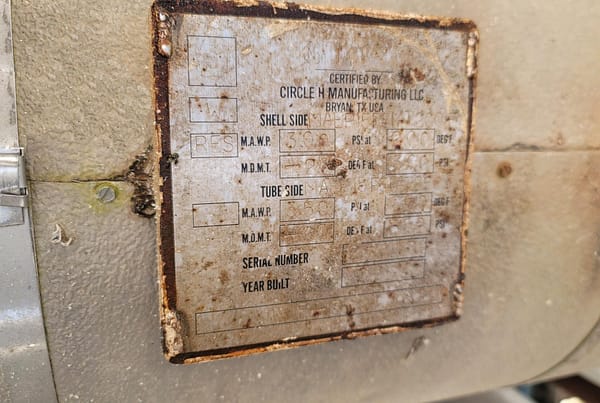“Jim, there is something in your last report that I want corrected in this one,” began the plant inspector for a facility we were at in California. We had first taken measurements at his plant five years prior and were back for a routine evaluation.
“Your report claimed that in some parts of our facility, our HTRL pipe is 1¼″, and in other places, it is ¾″,” he continued. “But that’s not true. All of our HTRL pipe is 1¼”.”
I was confident that if our report listed the differing pipe sizes, it was correct.
“Jim, I know the HTRL pipe is 1¼″ throughout the plant, and I have the drawings to prove it!”
He did indeed have drawings of the plant, and they certainly indicated that the pipe should be 1¼″ everywhere.
We were walking through the facility as we talked, so we started visually inspecting one of the areas indicated as having ¾″ pipe on our report. Sure enough, some of the areas into and out of the control valves measured ¾″. In fact, when we looked at one valve, which wasn’t insulated, we could read the label that said it was ¾″.
Having bent down to check that label, the inspector stood back up and looked at me with a very different expression. He had been holding on to this feeling that our reports were incorrect for five years because he trusted that his drawings were correct! At any point during that time, he could have come right to this spot and checked the label on that valve himself, but instead he had to find out in front of me.
He’s not the only client of ours who found out that trusting their drawings is not always the best decision.
We were hired by a school district that had purchased a building from a food service company and were due for testing after five years of ownership. Brian, the mechanical engineer who was maintaining the facility, met us on the roof to go over the results.
“Brian, the data indicates you have some code violations here. There are thousands of feet of pipe in this facility, and we found many different sizes including a lot of pipe that is ¾″. Code states that anything less than 2″ pipe needs to be schedule 80. However, the data indicates quite a bit of this pipe isn’t up to code.”
Now, Brian’s job was to maintain the system that was already in place—not install it or measure each and every inch of pipe. And he was doing his job well—there was no evidence of corrosion in our data, plus he was doing his due diligence by bringing us in.
Unfortunately, he had inherited a facility where things clearly were not as they seemed. We came across one section of pipe where the data showed 33% wall loss if the ¾″ pipe was schedule 80. But as I parsed the data, I could see that sort of corrosion was not present. All the measurements were uniform, and corrosion doesn’t work that way. The only logical reason for these results were if schedule 40 pipe was installed instead of the required schedule 80 pipe. So, I told Brian I thought his pipe was probably ¾″, schedule 40 based on the data.
This flew in the face of what Brian, and the school district that purchased the building, thought they had, so it was big news. At the same time, we had worked with Brian on other projects, and he knew our Radiometric Profiling is adept at accurately determining the condition of pipes without needing to cut anything apart. And since we had taken over 1,000 data points in the building all indicating the pipes were dry, he was less interested in arguing with us than in getting to the bottom of what the state of his building was.
He went to one of the sections of pipe that was indicated as schedule 40 on our report and removed the insulation to reveal the stenciling on the pipe. Sure enough, it was labelled as schedule 40.
What followed was a lawsuit between the school district and the previous owner that has continued for years—a protracted legal wrangling that could have easily been avoided if both groups had taken the time to have the building’s pipes inspected before the sale instead of just trusting the drawings.
Spending the time and money to ensure the infrastructure of your pipes are just as solid as any area of a major purchase like this is certainly worth the while. The certainty that comes with that is a much better investment than just hoping the previous owner had everything right.
Brian actually related another story to me that illustrates this point well. At another site, an OSHA Process Safety Management Inspector informed him that a muster point sign needed to be posted at his facility.
“But, we already have one,” replied Brian.
He began walking the inspector over to the location of the sign, and questioned a few workers on the way. To a man, they all replied that there was a muster point sign on the back of the door at the main entrance to the plant.
“See, I told you we have—,” began Brian as he closed the door to reveal the sign on its back. And then he stopped, realizing that when the facility was recently repainted, the sign was removed and, apparently, not returned to its place.
Once again, firm belief was overcome by inspecting reality.
From signs to valves to pipes, when it comes to your facility, seeing is clearly more important than believing!



